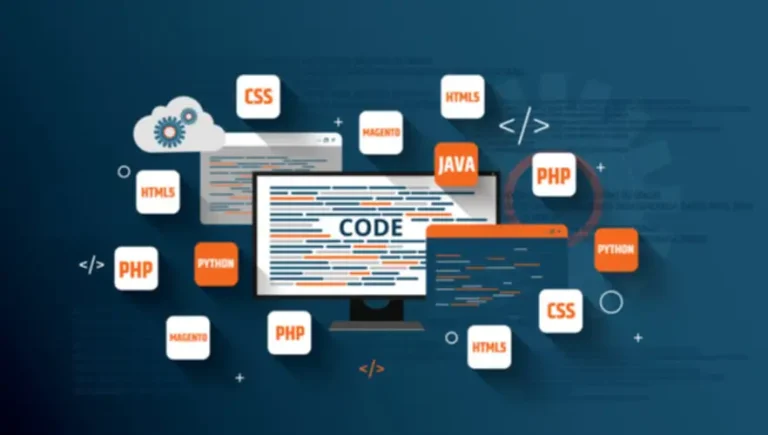Environment-specific variables may be changed automatically throughout a deployment, which implies the method is a reusable template. Where possible, use real-time code review techniques, such as pair or ensemble programming. If you can’t use a real-time process, monitor your evaluate queues to make sure code evaluations are prioritized above different work, particularly additional code adjustments. CD instruments additionally allow for customer-specific configuration, the place unique parameters are required for various customer cases, ensuring that deployments are tailor-made https://www.globalcloudteam.com/ to meet particular necessities. Steve Fenton is a Principal DevEx Researcher at Octopus Deploy and a 7-time Microsoft MVP with more than 20 years of expertise in software supply.
Why Are Devops Metrics Important?
It includes maintaining a tally of each stage of the CI/CD pipeline, from code integration to deployment, making sure that any hiccups are spotted and resolved swiftly. Below is a quick view desk evaluating the vital thing features and distinctive selling points of CI/CD monitoring instruments. Steady Integration (CI) and Steady Delivery/Deployment (CD) are key methods utilized in modern software improvement.

Artificial information can simulate edge instances (like nulls or weird characters) which real data has. Additionally, clear up any test knowledge generated on test databases after exams run, to keep environments tidy. Software improvement usually entails lengthy processes that delay updates and new options. Traditional strategies depend on massive, rare releases, which might prolong timelines and improve the danger of undetected points making their method to users.
By automating every little thing, you reduce the reliance on handbook intervention, making the method extra environment friendly and fewer error-prone. For instance, as an alternative of manually deploying code to staging or manufacturing, use automation tools to push the code each time the pipeline passes all the required checks. A sturdy testing suite helps establish points early and ensures that modifications don’t introduce regressions.
When issues are found during this stage, some thought should be given to the way to detect them in an earlier automated stage. Where no points are found over time, it may be attainable to reduce or take away tasks on this stage. Continuous Supply (CD) takes the model new software program version and strikes by way of all of the steps required to deploy it to production. This normally includes steps that improve the organization’s confidence in the new software version, some of which may be guide. By starting small and scaling gradually, you probably can keep away from overwhelming the group and ensure that each part of the pipeline is well-tested earlier than transferring ahead. This incremental method helps stop problems and allows for quicker suggestions.

A failed deployment is a release that must be rolled back or requires an pressing release of a repair for resolution. The shorter the time to repair the take a look at is, the better your group is at resolving points identified with code. It indicates that your CI pipeline is healthy and is in a position to answer errors and resolve issues rapidly. Automating the checks helps you tackle extra code bits in much less time, enabling the identification of failing code extra effectively. Nevertheless, if the take a look at move rate is lower than ideal, it may indicate a problem with the standard of the code lined up for testing total. CD’s mission is then to move these artifacts all through all the different environments of an organization’s development lifecycle.
One such follow that has gained widespread adoption is CI/CD — Continuous Integration and Continuous Delivery. Attempt to make your growth and staging environments as just like production as attainable. This means utilizing the same database engine model, related hardware configurations (scaled down, perhaps), and ideally a current subset of production data (if allowed). If your manufacturing pipeline runs in Spark on Kubernetes, don’t take a look at only on a neighborhood pandas script – incorporate a similar execution surroundings for exams.
These extra testing and verification further improve the reliability and robustness of the application. Construct duration measures the time it takes your engineers to complete one stage of the CI/CD pipeline. The Place the build length is longer, it might indicate a bottleneck in the processes or another issue that’s slowing down the whole operation. You’re delivering changes of all kinds right into a reside surroundings on an everyday basis; you’ll find a way to ship configuration modifications, infrastructure changes—everything! CI’s mission is to provide an artifact in some unspecified time in the future in time of the application how to use ai for ux design that satisfies buyer expectations—in different words, that has good high quality inbuilt.
What’s The Difference Between Continuous Integration (ci) And Steady Delivery (cd)?
These modern architectures benefit significantly from specialized tools and strategies that handle their distinctive challenges. Steady Integration (CI) includes developers frequently combining their code into a central repository, the place it triggers automated builds and testing processes. CI/CD undoubtedly will increase the speed ci/cd monitoring and the effectivity of the software improvement process while providing a top-down view of all of the duties involved within the delivery course of. On top of that, CI/CD could have the following advantages reaching all features of the organization.. In order to accelerate the whole improvement course of, it’s important to streamline each stage of the method and accelerate the operations.
The Place you rely upon another team to carry out the manufacturing deployment, you’ll need to work together to make it possible to make use of the identical process all over the place. Frequent commits are essential for Continuous Integration as they cut back the prospect of change collisions and make it simpler to pinpoint where a problem was introduced. Smaller commits reduce the complexity of code reviews and provide extra feedback opportunities from automated exams. This automation includes tasks corresponding to configuring environments, managing infrastructure, and executing deployment steps. Automated deployments also support advanced strategies like blue/green and canary deployments, which improve utility reliability and availability during deployments. CD tools enable teams to deploy any sort of application to any environment, together with cloud, on-premises, virtual machines (VM), and Kubernetes.
- Every check-in is then verified by an automatic construct, permitting groups to detect problems early.
- MetricFire can help you guarantee that this spine is monitoring correctly and you have full perception into the software program delivery pipeline.
- Consistency between environments ensures that code behaves the identical method at every stage of the pipeline, minimizing unexpected errors when deploying to production.
- Deployment frequency and lead time metrics present useful insights into the effectivity of the CD process.
In its easiest kind, CI/CD introduces automation and monitoring to the entire SDLC. A excessive price may point out an issue with the testing mechanisms deployed early within the CI pipeline; they might be missing bugs frequently. Typically, this is considered good because it reduces the danger of introducing too many erroneous variables right into a release. Smaller adjustments achieve feedback sooner, additional offering impetus to the CI/CD momentum. As Quickly As you add these annotations, Prometheus should auto-discover these companies and metrics will begin exhibiting up.

As developers concentrate on writing and transport code, they may unknowingly deploy adjustments that negatively affect pipeline efficiency. Whereas these changes may not cause pipelines to fail, they create slowdowns associated to the way an utility caches data, masses artifacts, and runs capabilities. It’s simple for these small changes to go unnoticed, particularly when it’s unclear if a sluggish deployment was as a end result of adjustments launched within the code or other exterior factors like network latency. However, as these commits compile over time, they start to create noticeable downturns in improvement velocity and are troublesome to retroactively detect and revert. When one developer deploys sluggish checks or other modifications that degrade the pipeline, it impacts the software delivery tempo of other team members. This is especially relevant when a quantity of development teams share a pipeline, which is a standard setup for organizations that use monorepos.
By tracking CI/CD metrics, groups can gain visibility into varied elements of the pipeline, similar to build times, check durations, and deployment frequency. These metrics help determine areas where improvements may be made to optimize efficiency and reduce the general time it takes to ship software. For example, if a specific job in the CI/CD pipeline constantly takes a very long time to complete, it could indicate a need for optimization or parallelization to minimize construct and test times. By addressing these issues, organizations can considerably velocity up their software delivery while sustaining high-quality requirements. To achieve optimal resource utilization and cost-efficiency, it’s essential to align CI/CD metrics with business goals.
It Is important to observe the pipeline to ensure it’s functioning appropriately and repeatedly seek areas for enchancment. Implementing metrics and monitoring tools may help track the efficiency of the pipeline and identify bottlenecks. Each of these stages helps ensure that only high-quality, examined code makes it to manufacturing, while also automating repetitive tasks in the software program delivery course of. Automation tools like Jenkins, first released in 2004, helped builders undertake Continuous Integration by making code merges and testing more efficient.
In this case, you’ll wish to investigate the specific pipeline(s) which are going through points. We suggest including links to more granular dashboards which are helpful for guiding additional investigations, as proven below. When the pipeline is efficient and reliable, builders spend less time troubleshooting build and deployment issues and more time writing code. This boosts general productiveness and morale inside the growth staff as builders can build and deploy new options with much less friction. Datadog’s integration with key CI applied sciences offers real-time monitoring and observability throughout CI/CD pipelines. Effective CI/CD monitoring is crucial for sustaining a reliable and efficient deployment pipeline.